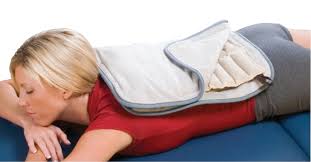 The age-old question: Heat or ice? While ice is ideal for certain injuries, heat also can provide symptom relief for a variety types of health conditions. In this article, I will focus on thermotherapy, or superficial heat modalities, which affect underlying tissue to a depth of 1-2 centimeters. These can include heat/hot packs, fluidotherapy, and paraffin baths.
The age-old question: Heat or ice? While ice is ideal for certain injuries, heat also can provide symptom relief for a variety types of health conditions. In this article, I will focus on thermotherapy, or superficial heat modalities, which affect underlying tissue to a depth of 1-2 centimeters. These can include heat/hot packs, fluidotherapy, and paraffin baths.
When you apply heat to a specific body part, it raises the temperature of the tissues below, which invokes certain physiological responses. Blood flow increases; cells ramp up their metabolic activity and consume more oxygen; blood capillaries become more permeable. This brings fluid into the area and can increase inflammation or swelling to the area. Heat can increase the elasticity of soft tissue and the extensibility of collagen tissue In other words, heat makes everything faster while ice slows it down.
How is heat useful for treating injuries?
Here are some ways heat can help:
- Decrease muscle spasms or trigger points
- Provide pain relief and comfort
- Reduce joint stiffness or contractures
- Treat subacute and chronic injuries, such as arthritis or fractures
- Decrease muscular stiffness
When using heat at home, it should always be comfortable. Please be aware that you can burn yourself and to be careful when using heat. It is not advisable to use heat within 24-36 hours of an acute injury if there is swelling or bleeding involved. As with all therapeutic modalities, thermotherapy is best used in conjunction with a supervised therapy plan with either your occupational or physical therapist.
Source
Bracciano, A. G. (2008). Physical Agent Modalities: Theory and Application for the Occupational Therapist (2nd ed.). Thorofare, NJ: SLACK Incorporated.

